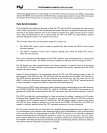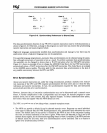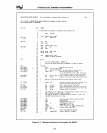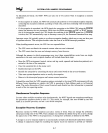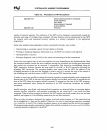
CHAPTER 3
SYSTEM-LEVEL NUMERIC PROGRAMMING
System programming for 80287 systems requires a more detailed understanding of the 80287 NPX
than does application programming. Such things as emulation, initialization, exception handling, and
datil and error synchronization are all the responsibility of the systems programmer. These topics are
covered
in
detail
in
the sections that
follow.
80287
ARCHITECTURE
./
On a software level, the 80287
NPX
appears
as
an
extension of the 80286 CPU. On the hardware
level, however, the mechanisms by which the
80286 and 80287 interact are a bit more complex. This
section describes
how
the 80287
NPX
and 80286
CPU
interact and points out features of this inter-
action that are of interest tdsystems programmers.
Processor Extension Data Channel
All transfers of operands between the 80287 and system memory are performed
by
the 80286's internal
Processor Extension Data Channel. This independent, DMA-like data channel permits
all
operand
transfers of the
80287 to come under the supervision of the 80286 memory-management and protection
mechanisms. The operation of this data channel
is
completely transparent to software.
Because the
80286 actually performs all transfers between the 80287 and memory,
no
additional bus
drivers, controllers, or other components are necessary
to
interface the 80287'NPX to the local bus.
Any memory accessible to the
80286 CPU
is
accessible
by
the 80287. The Processor Extension Data
Channel
is
described in more detail
in
Chapter Six of the 80286 Hardware Reference Manual.
Real-Address Mode and Protected Virtual-Address Mode
Like the 80286 CPU, the 80287
NPX
can operate in both Real-Address mode and
in
Protected mode.
Following a hardware RESET, the
80287
is
initially activated
in
Real-Address mode. A single, privi-
leged instruction (FSETPM)
is
necessary to set the 80287 into Protected mode. .
As
an extension to the 80286 CPU, the 80287 can access any memory location accessible
by
the task
currently executing
on
the 80286. When operating
in
Protected mode,
aU
memory references
by
the
80287 are automatically verified by the 80286's memory management and protection mechanisms as
for any other memory references by the currently-executing task. Protection violations associated with
NPX instrilctionsautomatically cause the
80286 to trap to an appropriate exception handler.
To the programmer, these
two
80287 operating modes differ only
in
the manner
in
which the NPX
instruction and datapointets ate represented
in
memory following an FSAVE
or
FSTENV instruction.
When the
80287 operates
in
Protected mode, its NPX instruction and data pointers are each repre-
sented
in
memory as a 16-bit segment selector and a 16-bit offset. When the 80287 operates
in
Real-
Add'
.:ss
mode, these same instruction and data pointers are represented. simply
as
the 20-bit physical
ad"
;'esses
of the operands
in
question (see figure
1-7
in
Chapter One).
3-1





